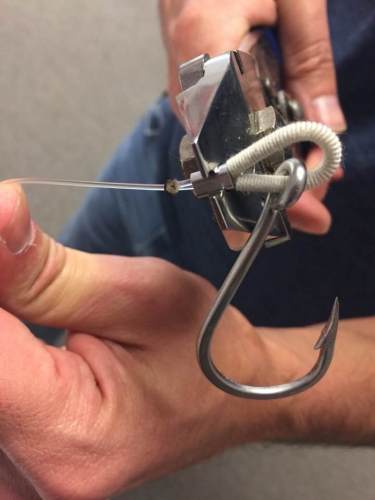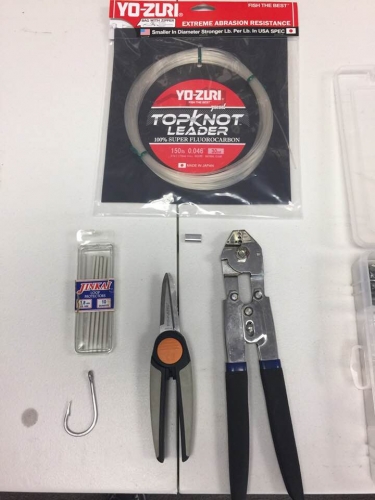BLOG
Targeting Peacock Bass in South Florida with a Yo-Zuri Crystal Minnow -Robert Di Nino
 Living is South Florida, I feel blessed to have so many species of fish within a short drive from home. Most of these prized fish can also be caught from the shore. My favorite fresh water fish is the Butterfly Peacock Bass. The Peacock Bass will be found from South Miami to Palm Beach since they cannot tolerate water temperatures below 60 degrees. As crazy as it sounds, we still see cooler temperatures here in Florida.
Living is South Florida, I feel blessed to have so many species of fish within a short drive from home. Most of these prized fish can also be caught from the shore. My favorite fresh water fish is the Butterfly Peacock Bass. The Peacock Bass will be found from South Miami to Palm Beach since they cannot tolerate water temperatures below 60 degrees. As crazy as it sounds, we still see cooler temperatures here in Florida.
.jpg)
Target them in canals, ponds, and lakes, and specifically in shady areas around bridges, culverts, canal intersections, bends, dead ends, and near fallen trees. They feed in the shallow water adjacent shorelines. When I am specifically targeting the Butterfly Peacock Bass, my go to lure is the Yo-Zuri Crystal Minnow. However, whether you are targeting largemouth and peacocks in fresh water or snook, tarpon, and jacks in saltwater, fishing from the shore or your boat, the Yo-Zuri Crystal Minnow truly does it all.
.jpg)
My go-to set up is the 3.5 inch suspending in the bronze color on a medium heaving spinning rod with 20lb Yo-Zuri SuperBraid and 15lb TopKnot fluorocarbon leader if the water is clear. My favorite conditions are when there is lots of small-medium sized baitfish in the area.
Yo-Zuri prostaff Todd Woods takes the “W” at WON Lake Havasu Open!!!!!
It was by far 3 of the best winter days of fishing for me at Arizona’s Lake Havasu. My practice started out pretty rough. My first day was spent in the river around the I-40 Bridge looking for smallmouth bass in the current. After a full day of practice I had only 4 bites; 2 largemouth and 2 smallmouth throwing a HARDCORE Twitch’ N Glide to locate fish. The fish will follow the swimbait and I would mark a waypoint on my Lowrance HDS unit.
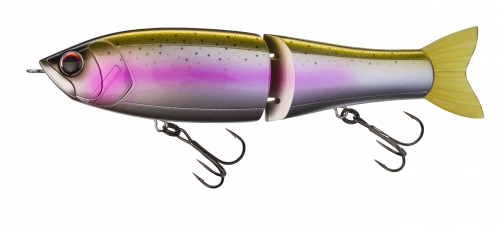
The second day of practice consisted of the Lower part of the river with zero bites and a school of 6 largemouth I found hanging around a letdown tree in 4 foot of water. The 3rd day of practice was spent in the main lake. I was targeting Rock, Grass and bait. But after a week of cold temps below freezing and dropping water temps of 47 degrees the bait was very difficult to locate. I managed 6 fish on a small Swimbait and a HARDCORE CRANK 4+ in Baby Bluegill pattern.
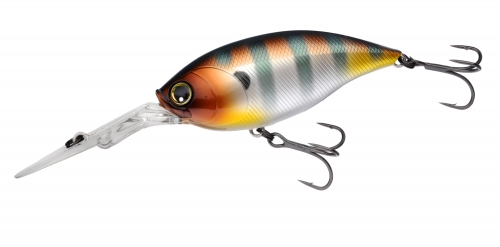
The air temps started to get warmer and day 4 the water temp was 50 degrees. I had a feeling that the bass would start moving shallower. So I started looking for Mud Hens (Black Birds with white beets). The birds feed on grass and if the cove had more than five bits in it I know there was bass and grass close by. I was using a HARDCORE VIBE 70S Baby Bluegill color, working it slowly ripping it through the sparse grass. At around noon on the final day of practice I decided to fish one of the popular Marinas on the main Lake. It too had Mud Hens there so I knew there was grass. Around the 5 casts in the marina on the VIBE I caught a 5 pounder that absolutely choked the VIBE. I had to cut the hooks from the inside of the gills to keep from severely injuring the fish. A couple cast later I caught a 2 pounder on the same bait. I immediately left the marina and continued my practice.
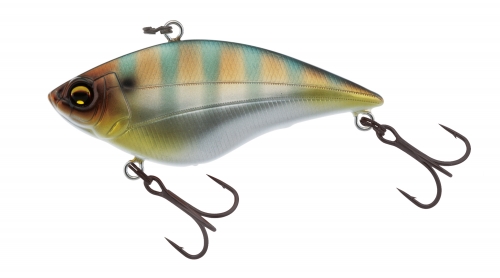
Moving further south down the lake I found a few fish on the 4+ Crank in the main lake on the edge of some grass in 10 foot of water. That day I had a total of 5 fish. The next day was somewhat of a day off. I was able to fish till noon but never got a bite or a follow from a bass.
I have over 30 years of fishing Lake Havasu and I knew it was going to be a tough 3 days of fishing. My best estimation was winning weight 46 pounds. Not much “dock talk” other than tough fishing. My roommate was averaging 2 bites a day.
The tournament was shared weight. The day before the first day I drew a guy from Arizona and he was eager to know what to tie on. I gave him a 1/2 ounce bladed jig. I elected to start day 1 in the marina. After about an hour I started catching fish. I was throwing the Vibe between the boat docks ripping the bait through the grass. I caught 4 fish from 2-4 lbs. My co-angler then caught a 7.75 Largemouth to boost our weight. A few cast later he caught a 5 pounder. We ended up catching 12 fish with the largest 5 weighing in at 23.70, leading the tournament by over 5 pounds.
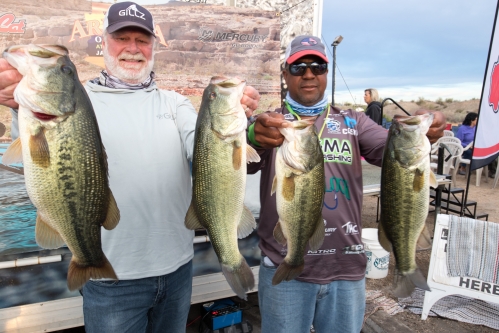
Day 2 I decided to give the marina the day off hoping to manage my fish to make it 3 days. I fished the main lake and southern area with small swimbaits and crankbaits. I caught 2 fish early on the 5 inch Basstrix Swimbait in Hitch color on a 1/2 ounce Bladerunner Spintrix head. I later caught fish number 3 running south on a HARDCORE 4+ Baby Bluegill Crankbait. With a 4:15 weigh-in and only 3 fish with an hour left of fishing I was wondering if I had made the right decision to not fish the marina. At 3:15 I pulled into one of my favorite pre-spawn coves and began to throw my swimbait around some submerged habitat. My co-angler noticed a Grebe diving and coming up with a threadfin shad on the surface. I worked my way to the area where the grebe was feeding on shad and also had several coots in the area feeding on grass. I made a cast a caught a 4 pound+ largemouth. A few cast later I caught a 2 and 1/2 pounder to fill out limit for 17 pounds.
The third and final day was spent entirely on the above mentioned marina. I started the morning with a 4 pounder and never looked back from there. I caught a bass on every other row of docks. I caught 8 fish on the bladed jig and ended up with over 21 pounds. It was the second largest bag of day 3 and I won by over 5 pounds.
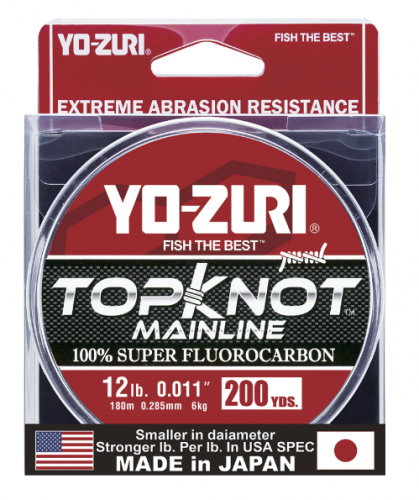
The key to my success was locating bait, grass and fishing the baits slowly ripping them through the grass. I was using 14 lb Yo-Zuri Top-Knot 100% Fluorocarbon. Saving those fish the second day was also a key to victory.
“Sending Good “Vibes” To Lure In Mid-Winter Northern Pike and Walleyes”- by Mark Maule
As the ice thickens, snow accumulates on top of it, and fish have seen just about every bait imaginable offered by ice anglers in northern states, catching walleyes and northern pike can become a bit more of a task in mid-winter than at first ice. By the middle of January through early February fish have become more lethargic, and in many cases are reluctant to chase down bait than they were earlier in the year. However, this is no reason to put away your noisemakers that have worked throughout the open water and early winter ice fishing season! The 3DB Vibe can be a great lure which creates a disturbance in the water that can be used in more way than one catch walleyes and northern pike in mid-winter.
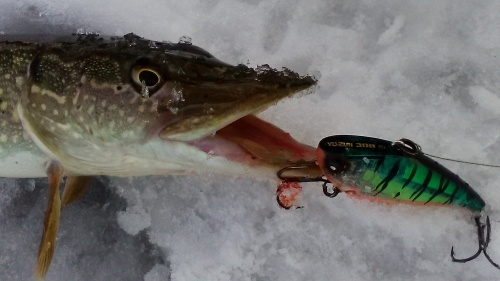
The Yo-Zuri 3DB Prism Fire Tiger Vibe is probably my most versatile lure that I use on lakes where perch is the forage species for northern pike and walleyes. Like in open water, it can be used effectively throughout the ice season to catch fish. The first way that I employ the 3DB Vibe is to rip it through the water column, making as much noise as possible and trying to get a reaction strike. This approach with the Vibe through the ice is great in mid-winter wherever the first big drop-off is in the lake. Usually, I look for quick transitions from 12 feet down to 18 feet or more and set up right in the middle of the transition. In this scenario, the goal is to catch fish that are moving up breaks and transitions before they get to the flats at dusk to feed on forage species.
While rapidly ripping, jigging, and swimming the 3DB Vibe can be a great way to catch some northern pike and walleyes in mid-winter that are cruising drop-offs, there are time when I simply use it as a decoy to draw fish in from a long way off. Even the most finicky of fish can be drawn into the area to investigate all of the commotion caused by the 3DB Vibe. When fish approach while pulling the Vibe through the water, but will not strike it directly in mid-winter, I employ a second Yo-Zuri product, the Snap Bean tipped with a fathead minnow only a few feet away under a slip bobber at the same depth that I am jigging the 3DB Vibe. What happens is that northern pike and walleyes will come cruising right up to the Yo-Zuri 3DB Vibe to investigate, see the Snap Bean setup, and will leave the Vibe to catch the easier smaller meal with the Snap Bean and minnow. In this case, the Vibe is used just to get the fish’s attention, and the Snap Bean tipped with a minnow is what seals the deal. In this scenario, I move to the top of the flats in 8-11 feet of water as the focus is less on reaction and more on catering to feeding fish after dusk.
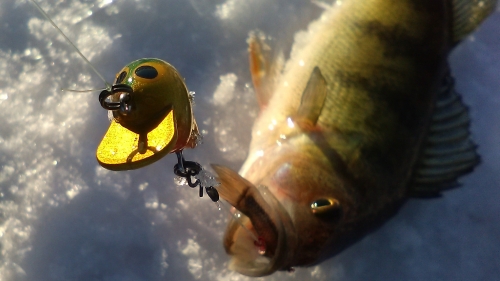
Whether you are using the Yo-Zuri 3DB Vibe to get fish to bite it directly, or you are using it as a decoy to draw in finicky fish from a distance so that they bite a Yo-Zuri Snap Bean tipped with a fathead minnow, the Yo-Zuri 3DB Vibe is a top-notch choice that can keep catching fish for you throughout the mid-winter ice season.
A Knotted Up Mess!!! (pt. 2)
Previously we talked about different knots to tie in freshwater applications, but now let’s dive into another simpler topic. From the time I move to Florida and started getting more experienced into saltwater fishing I quickly learned that saltwater anglers stick to the basics; this includes the knots they tie. Now just like freshwater anglers, everyone has their preferences but from what I have experienced is anglers stick to the knots: loop knot and Uni-Knot for tying to their favorite Yo-Zuri lure, Uni-to-Uni Knot for adjoining main lines to leaders, and then there is the art of crimping.
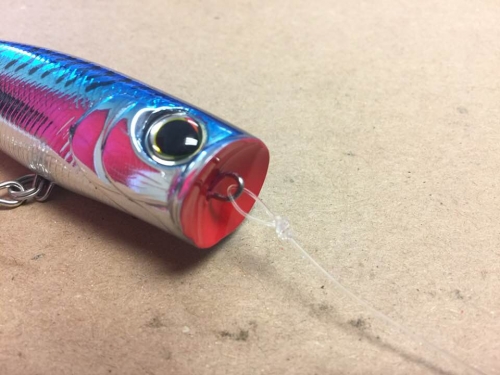
The basic loop knot is probably used the most in saltwater fishing because it is simple to tie with heavier fluorocarbon or monofilament leaders. Tying a loop knot also gives the bait the ability to move more freely in the water, which will create more action. As you can see in the photo, the actual knot is away from the lure, not at the actual line tie.
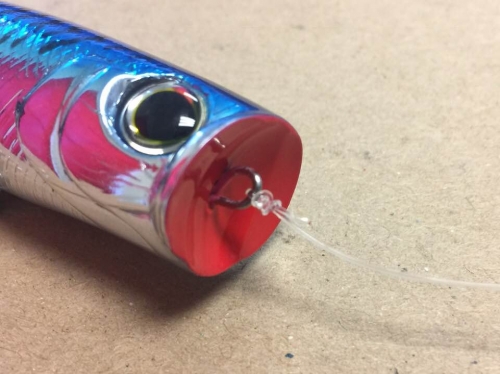
The Uni-Knot is also a favorite among saltwater anglers for the same attributes as the loop knot; it is easy to tie, works well with larger pound test line, however does not give the bait an extra moving ability. The Uni-Knot is tied directly to the lure line tie and is common to tie for the baits that just swim through the water column and resemble a bait fish.

One popular fishing technique that is shared among both freshwater and saltwater anglers, using a braided mainline to a leader material. Commonly anglers use a Uni-to-Uni knot for this application. Typically an angler will wrap the leader material four or five times around the braided mainline to form one Uni-Knot, then wrap the braid around the leader material ten to fifteen times to form the second Uni-Knot before tying them tight together. This knot is relatively small and will easily go through your rod guides when casting. The friction on the two knots is pulling against one another so the Uni-to-Uni Knot will hold up well.
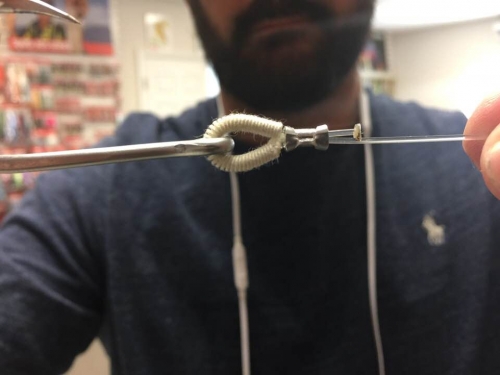
Finally, another form of knot tying that requires tool is not really a knot: crimping!!! Crimping is something a lot of saltwater anglers will use for tying on lures with heavy and large test line. Commonly anglers will implement a crimping technique when using 80lb test or larger; something for fishing to beat world records!!! Crimping tools required are: Crimpers, a Crimp, Chaff Tubing, and of course your favorite Yo-Zuri lure or one hook for live bait fishing. To perform this properly you will want to: feed the mainline through the crimp and chaff tubing, go around the eye of the lure, and feed through the crimp again. It is suggested that pull all the components as far down as you can but still leave a little room in case the mainline does slip a little. This is very common anglers that are using live bait with larger leaders and trolling bait (Yo-Zuri Bonita and Mag Speed Vibe are common examples).
